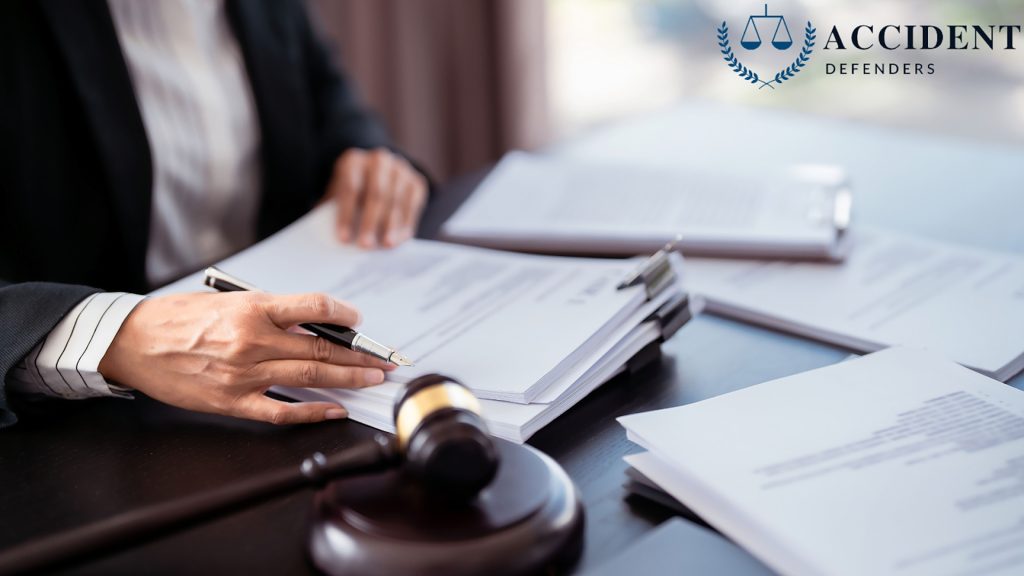Workplace discrimination remains a pressing issue in the United States. In Fiscal Year 2022, the Equal Employment Opportunity Commission (EEOC) received 73,485 new discrimination charges, marking an almost 20% increase from the previous year. This is clear evidence that more employees are speaking up against unfair treatment, and a solid weapon in this fight has been workplace discrimination lawsuit cases. It provides a vital path for victims to seek justice and hold employers accountable for unlawful conduct. However, this legal process can be complex and intimidating, which is also a reason why many individuals retaliate.
But not anymore, with our blog, we have aimed to help you understand each stage of a workplace discrimination lawsuit, empowering you to protect your rights and take informed legal action when discrimination occurs.
What Is a Workplace Discrimination Lawsuit?
A workplace discrimination lawsuit is a legal action filed by an employee who believes they have been treated unfairly at work due to protected characteristics. These lawsuits are typically based on violations of federal and state laws, including Title VII of the Civil Rights Act of 1964, the Age Discrimination in Employment Act (ADEA), and the Americans with Disabilities Act (ADA). Lawsuits can address issues such as wrongful termination, harassment, unequal pay, or denial of promotions, aiming to secure remedies like compensation, reinstatement, or policy changes.
Who Can File a Workplace Discrimination Lawsuit?
The law protects specific groups, known as protected classes, ensuring that intolerance based on color, religion, sex, national origin (under Title VII of the Civil Rights Act), race descrimination, age 40 or older (under the Age Discrimination in Employment Act), disabilities (under the Americans with Disabilities Act), and genetic information (under the Genetic Information Nondiscrimination Act) is prohibited. Individuals who can file a workplace discrimination lawsuit are:
- Current Employees
Individuals currently employed who experience discrimination in hiring, promotion, pay, job assignments, or workplace treatment.
- Former Employees
Employees who were terminated or forced to resign due to discriminatory practices. - Job Applicants
Individuals who were denied employment opportunities based on protected characteristics such as gender, disability, or race discrimination. - Interns and Trainees
Even unpaid interns or trainees may have protections under certain state or federal anti-discrimination laws. - Representatives or Family Members
In specific cases, a representative or family member may file on behalf of someone who cannot do so themselves, such as minors or incapacitated individuals. - Independent Contractors and Temporary Workers
Rights may be limited, but certain protections exist under federal and state laws, depending on employment status.
The Legal Process Step-by-Step
Document the Discrimination
Begin by recording every incident of discrimination in detail, including dates, times, people involved, and what occurred. A lawyer can later review this documentation to determine its legal value and help identify patterns that strengthen your claim.
Consult and Hire a Lawyer
The next important step is hiring a workplace discrimination lawyer. Discrimination lawsuits involve strict rules, deadlines, and detailed legal filings. A lawyer can assess the strength of your evidence, outline potential claims, and handle all legal paperwork. They also represent you in settlement discussions or court proceedings. Many lawyers work on contingency, meaning you pay only if you win or settle the case successfully.
Review Applicable Laws
Determine which laws apply to your situation based on your location and the type of discrimination. State laws may offer broader protection than federal ones. Understanding the correct legal foundation helps ensure your case is filed properly. An employment lawyer can explain which laws cover your experience, confirm whether you meet the protected status definitions, and advise where your lawsuit should be filed.
Notify Your Employer
Before filing a lawsuit, it’s often helpful to notify your employer in writing about the discrimination. Submit a formal complaint to Human Resources or management and keep a copy. This step shows that you attempted to resolve the issue internally. If the employer retaliates after your complaint, it can strengthen your legal case. A lawyer can guide you on how to phrase and deliver your written notice effectively.
Draft the Complaint
Your lawyer will help you prepare a formal complaint that outlines the facts of your case, identifies the legal violations, and lists the damages you seek. The complaint serves as your official statement to the court. Filing an accurate, well-structured complaint ensures your case begins on solid legal ground.
File the Complaint in Court
Once finalized, the complaint is filed in the proper court, typically a state trial court. The filing must include the complaint, required copies, any civil cover sheets, and a filing fee. The court then assigns a case number. Your lawyer will ensure everything is filed correctly and on time, avoiding costly mistakes or delays that could jeopardize your case’s progress.
Serve the Defendant
After filing, your employer (the defendant) must be formally notified. This is done through a legal process called “service of process,” where the complaint and summons are delivered properly, often by a process server or sheriff. Proof of service must then be filed with the court. Your lawyer will coordinate this step to ensure legal compliance and maintain accurate records of the delivery.
Await the Employer’s Response
The employer typically has 20–30 days to respond after being served. They may admit or deny the allegations or file a motion to dismiss. Your lawyer will review their response and prepare the next legal moves. This early phase sets the tone of the case, and having a lawyer ensures your side is ready to counter any procedural or strategic challenges.
Discovery Phase
During discovery, both the plaintiff and defendant exchange relevant information and evidence. This may include emails, personnel files, company policies, and deposition testimony from witnesses. The discovery phase allows both sides to understand the strengths and weaknesses of their case and prepare for trial. It is often the most time-consuming stage, but it is crucial for gathering facts and ensuring a fair trial.
Pre-Trial Motions and Settlement Negotiations
Before trial, parties may file motions, such as a motion to dismiss or for summary judgment, which can resolve the case or narrow the issues without a full trial. Simultaneously, settlement negotiations may continue, as many parties prefer to resolve disputes outside of court to save time, reduce legal costs, and avoid public exposure. Settlements at this stage can include compensation, policy changes, or other agreements.
Trial
If the case is not settled, it proceeds to trial, where both parties, with their respective workplace discrimination lawyers, present evidence and call witnesses. The court evaluates whether the employer engaged in unlawful discrimination and whether the employee has met the burden of proof. Trials can be before a judge (bench trial) or a jury, depending on the case and jurisdiction. The trial process is formal and includes examination and cross-examination of witnesses, document review, and legal arguments.
Verdict and Remedies
After evaluating the evidence, the court issues a verdict, determining whether discrimination occurred. If the employee prevails, remedies may include monetary compensation, reinstatement, promotion, policy changes, or punitive damages.
Common Challenges in a Workplace Discrimination Lawsuit
While filing a workplace discrimination lawsuit can help protect your rights, the process often comes with several challenges that employees should be aware of, which include:
- Proving Discrimination
Employees must show that adverse actions were due to protected characteristics, which can be difficult, especially in cases of subtle or systemic discrimination. - Burden of Proof
The plaintiff bears the responsibility to prove the employer’s actions were discriminatory, often requiring extensive documentation, witness testimony, and evidence of patterns of behavior, which can be challenging, particularly if the employer is uncooperative. - Retaliation Concerns
Employees may fear retaliation, such as termination or demotion, which can discourage them from pursuing legal action. - Complex Legal Procedures
Filing deadlines, agency requirements, and court procedures are complex and must be strictly followed to avoid dismissal. - Emotional Stress
The process can be emotionally taxing, especially when dealing with workplace hostility or ongoing harassment.
How a Workplace Discrimination Lawyer Can Help?
Overcoming these challenges of workplace discrimination lawsuits without professional guidance can be overwhelming. A skilled workplace discrimination lawyer can assess your claim, gather vital evidence, meet strict deadlines, and represent you in investigations, negotiations, or trials.
If you are facing workplace discrimination, Accident Defenders can provide expert legal support. With over 30 years of collective experience serving Los Angeles, San Bernardino, Riverside, Orange, San Diego, Ventura, and Santa Barbara counties, and throughout California, our firm has a deep understanding of employment law and workplace discrimination cases. We operate on a contingency-fee basis, ensuring there are no upfront costs, consultation fees, or hourly charges. Payment is only required if a successful outcome is achieved. Contact us at (323) 591-2829 today for a free consultation and take the first step toward protecting your rights.




